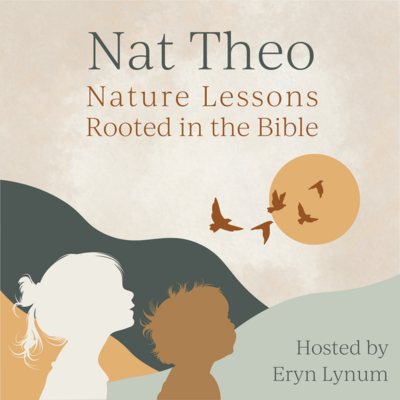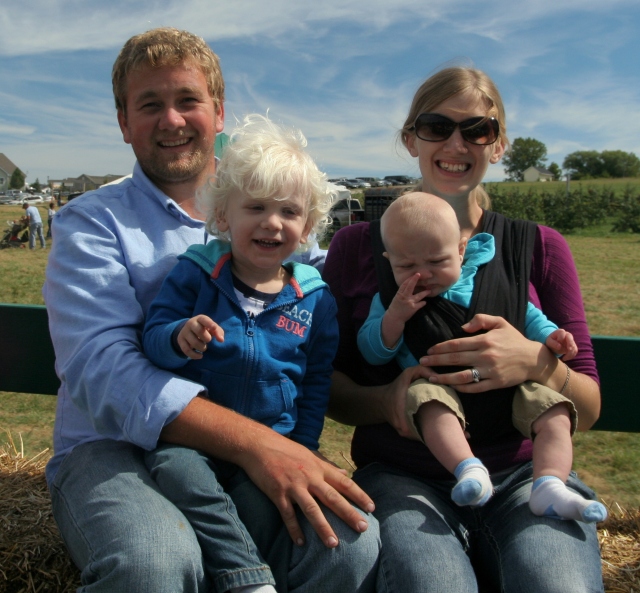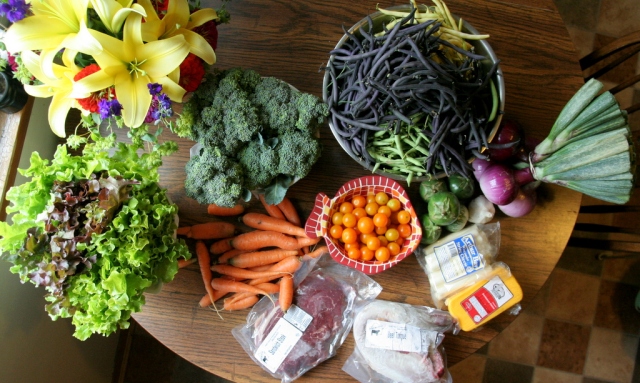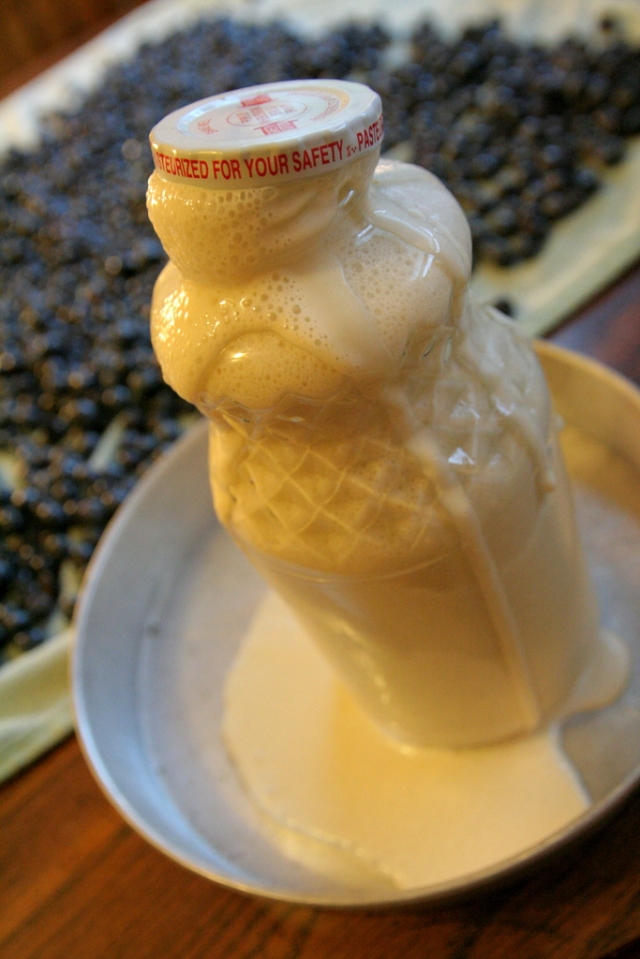Into A Whole Food Kitchen – The Marshall Family, Part 3 of 3
The Nature of Rest
What the Bible and Creation Teach Us About Sabbath Living
Intentional Parenting
Nature Studies
Apologetics
Adventure
Free Resource
Entrepreneurship
Homeschooling
Faith
Books
Categories
Master Naturalist, Bible teacher, author, wife, and mama of four! Join our adventures of discovering God while adventuring in creation.
I'm Eryn
Hey there!


Listen Now






Order now
The Way My Family Eats
Normally I just think of my family’s diet as a way of eating, instead of a specific set of rules or guidelines. And so when I refer to my family’s “diet”, I’m not referring to a fad, or anything temporary; rather I’m referring to the way we’ve chosen to eat for life. Simply put, we choose to eat whole foods, unadulterated by science and processing; foods found in the closest state to their origin as we can get them, just as God designed them to be eaten. But—if my family comes close to following any sort of diet, it would be a Traditional Diet.
At least, that’s the direction we’re heading in. I’ve only recently begun learning about Traditional Diets. My education began when Becky Marshall, the Whole food mom we’ve been learning about this week (be sure to read part 1 and part 2 of the Marshall’s story!), lent me a book. The book was called “Deep Nutrition” (Catherine and Luke Shanahan, 2009), and it discusses the traditional diets of our ancestors; what foods they ate and how they prepared them; as well as how those foods affect our genes, and the genes of our children. I’m only halfway into the book, but it is intriguing, and we’ve begun implementing what we’re learning in our own home.
Stepping Into The Classroom Which Is The Marshall’s Kitchen
Stepping into Becky’s kitchen, I got to see first-hand another mom who is passionate about feeding her family traditional foods. Speaking with her gave me a new confidence to further explore these time-honored ways of preparing and preserving nutrient-packed foods.
Whenever I begin learning something new about food (new to me, anyways…), I’m apt to become overwhelmed. There are just so many theories, so many opinions, and so many different ways to feed one’s family. How can I ever decide what is best, and then actually implement it into my kitchen? Becky Marshall was able to shed some light on this dilemma for me.
You see, The Marshall family is simply learning as they go along, and enjoying every bit of the experience! “I’ve been at this for seven years,” Becky told me, “and I’m just now beginning to do things like… fermenting!” She pulled open a door behind her to reveal glass jars sitting on the floor, home to vegetables she had harvested from her garden, and was now preserving through natural fermentation. I wanted to dip a fork into a jar right then and there.
Preserving her garden’s bounty through natural fermentation is one of Becky’s next goals in preparing whole foods for her family. Another facet of Traditional cooking she is exploring is how to incorporate more organ meats into her family’s diet. Organ meats from grass-fed or pastured animals are absolutely packed full of healthy fats. They are also unbelievably rich sources of nutrients difficult to find in other foods. Organ meats are often the least expensive cuts of meat, making them a good choice for eating whole foods on a budget! These are the sort of things I’m talking about when I refer to a traditional diet. These are the foods our ancestors ate and thrived on.


Although Becky’s husband, Chuck, is not thrilled about organ meats (yet), the Marshall children are enthusiastic about these new foods. Here 5-year-old Charlie is about to enjoy some bone marrow for lunch!
What Is A Traditional Foods Diet?
Melodie Kjer, another food blogger I write alongside of on Whole Lifestyle Nutrition, gives this definition of a Traditional Diet:
“Traditional food is unprocessed, whole food as God or nature made it, that takes into account ancient methods of preparation. With such conflicting information regarding nutrition, a traditional foods diet looks at history to determine wherein lies the truth. It overlooks fads and instead examines what foods were eaten and considered healthy by our great-great-grandparents or by tribal people of the past and today. It has a big emphasis on foods that are nutrient dense, like eggs, butter, and fish, making the most of each bite consumed.”
If you have a few minutes, head over to Melodie’s blog and read what she’s researched and written about a Traditional Foods Diet. She’s done a wonderful job of describing this way of eating in simple terms. http://sweetbasilnspice.blogspot.com/2013/01/what-is-traditional-foods-diet.html
So What Foods Compose a Traditional Foods Diet?
What exactly does a Traditional Diet consist of? “Eggs, meat, dairy (most of it was consumed raw), fish, bone broth, a large variety of fruits and vegetables, oils and fats like butter, lard, tallow, palm oil and coconut oil – even cod liver oil, sourdough breads, whole grains, nuts, beans, seeds, root vegetables and tubers, lacto-fermented vegetables like sauerkraut and pickles, and natural sweeteners like real maple syrup and honey. Purists insist on pasture raised meat, eggs, and dairy, plus organic everything else.” (Melodie Kjer)
A Nutritious Way To Enjoy Wheat And Grains
One thing I like about a Traditional Diet is that it incorporates wheat and breads. I have discipline, but I just could not stick to a diet (unless absolutely necessary), that denied me bread and all bread-ish things. In a Traditional diet, bread is prepared in a traditional fashion; one which increases nutrition, and makes it more easy to digest by the body.
Becky grinds her own flour. She also soaks her flour before making bread, this breaks down complex starches and gluten, making the bread more digestible. Becky also makes bread, English muffins, and pizza dough from natural sourdough starter.
Sourdough is a traditional preparation I have recently begun incorporating into my own family’s diet, and I love it! My sister shared with me her own sourdough starter which she made with wild yeast from a New Glarus Cherry Ale. It smells just like a Cherry beer. I have to take a whiff each time I open the jar.
“The yeast” as I refer to them, have become a sort of pet to me. I need to feed them daily. Twice, sometimes. I watch them eat, growing and shrinking shortly after their meal, almost like the pet snakes we had growing up.
(End the pet comparison here) When I feed them well, they feed me well. When they are healthy, they bubble. They smell sweet. They’re airy. They make tasty pancakes and bread. As the yeast sit in their glass habitat on our hutch, I feel productive. I’m not cooking, I’m not prepping, but there they sit, readying themselves to fulfill their destiny as tasty, nutritious food for my family. They do 80% of the work, I then put in my 20%, and it’s a beautiful thing.
I’ve said it before–one of my favorite things about eating whole foods is that it is a never-ending process. We learn, we’re challenged, we get frustrated, we celebrate, we press on, we thrive. Hearing The Marshall’s story, from where Chuck and Becky came from, to their decision to refashion their way of eating in order to protect their family for generations to come, to what they are still learning and implementing even 7 years later; all of these things gave me so much hope and encouragement.
This. Takes. Time.
Learning to eat well is a process. It is a journey; one that looks different for every single family. The Marshalls taught me a lot about this journey. They exhibit such enjoyment in learning and growing on their whole food journey. As I interviewed Becky, I didn’t feel intimidated, or like a lesser mom because I don’t make my own yogurt. Instead I felt inspired. Inspired to press on. I’m one and a half years in, that’s 5 and a half years less than the Marshalls have been eating real food. This takes time.
That’s what I want to leave you with. After two months of interviews, photos, editing, researching, praying, writing, re-writing, re-writing again, and finally, here, at the end of my first blog series, this is what I leave you with:
This. Takes. Time. Please–embrace the journey!
My hope is that reading the stories from each of these three whole food families has proven to you the worth of investing in your own health, and the health of your family. Each of these families have made a conscious decision, counting their health a worthwhile cause, and chosen to eat against the flow of America. They are on a continuous journey to establish a way of eating that best fits their individual families. As they learn, they adapt; and they grow closer together as a family as they gather around the dinner table to a meal made with thought and love, created to secure a legacy of health in their home.
A huge thanks to the Gruetzmacher, Olson, and Marshall families for enduring my intrusion into their kitchens this past month, and trusting me to share their incredible stories with thousands of readers!


learn more
Raising kids stirs something deep in our souls — an innate knowing that our time is finite. Taking my kids outside in creation, I’m discovering how to stretch our time and pack it to the brim with meaning. God’s creativity provides the riches of resources for teaching the next generation who He is and how He loves us. Join our adventure and discover inspiration and resources for refusing rush, creating habits of rest, living intentionally, and making the most of this beautiful life!
I'm Eryn, Master Naturalist, Author, & Bible Teacher
Hey there!


Receive free inspirational resources for refusing rush, creating habits of rest, parenting with intentionality, and teaching our kids who God is through what He has made!
Inspired
Be
Brand + Website by Amarie Lael Design | TERMS & CONDITIONS + PRIVACY POLICY | Copyright 2011 - 2025 Eryn Lynum
Contact
Speaking & media
About
Books
Shop
Videos & Interviews
Email List
Stories
Free Downloads
Resources
Home
@erynlynumauthor


The Nature of Rest
What the Bible and Creation Teach Us About Sabbath Living
Now Available!
Order
X
Signed Copy








I love it, your family is beautiful and looks happy and healthy 🙂
It’s always best to look at Traditional “diets” for optimal nutrition!
Sorry, forgot to include….I would like to invite you to my blog and download a free ebook on real food fitness.